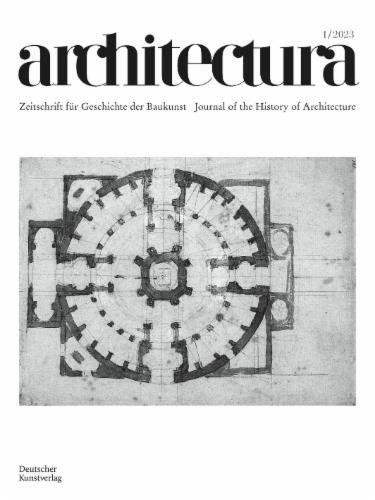
Befundbuch 3.0. Befundansprache und Befundverortung durch semantische Technologien
Stefan Breitling , Tobias Arera-Rütenik , Jürgen Giese und Leonhard Salzer
Aus der Zeitschrift: architectura
Online veröffentlicht:
25 Nov 2022
Zusammenfassung
Building archaeological findings are the primary sources of historic building research and an important basis for object-oriented interpretation in architectural history. In order to preserve the spatial, temporal and other content-related cross-references and contexts that are particularly valuable for analysis, a loose collection of diverse presentation formats such as descriptive texts, findings sheets, plan drawings and 3D representations has become established. However, this diversity is also a reason for the lack of accessibility and sustainable connectivity of this useful information. Linked Open Data technologies of the Semantic Web offer the possibility of making the findings available in a human- and machine-readable form, together with their diverse references. This requires consistent ›semantic modelling‹ of the material evidence in ontological form, oriented on specialist scientific needs.
Building archaeological findings are the primary sources of historic building research and an important basis for object-oriented interpretation in architectural history. In order to preserve the spatial, temporal and other content-related cross-references and contexts that are particularly valuable for analysis, a loose collection of diverse presentation formats such as descriptive texts, findings sheets, plan drawings and 3D representations has become established. However, this diversity is also a reason for the lack of accessibility and sustainable connectivity of this useful information. Linked Open Data technologies of the Semantic Web offer the possibility of making the findings available in a human- and machine-readable form, together with their diverse references. This requires consistent ›semantic modelling‹ of the material evidence in ontological form, oriented on specialist scientific needs.
Weitere Artikel in diesem Heft:
architectura Hefte
Volume 53 (2025)
Volume 52 (2022)
Volume 51 (2021)
Volume 50 (2020)
Volume 49 (2019)
Volume 48 (2018)
Volume 47 (2017)
Volume 46 (2016)
Volume 45 (2015)
Jetzt die Zeitschrift uneingeschränkt lesen
Ähnliche Titel
Sie möchten monatlich über Neuerscheinungen und Veranstaltungen informiert werden?

